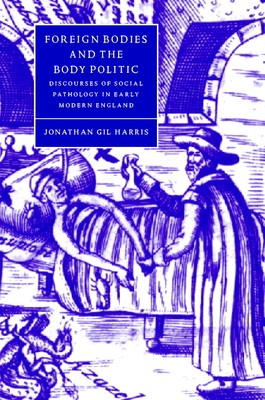
- We will send in 10–14 business days.
- Author: Jonathan Gil Harris
- Publisher: Cambridge University Press
- ISBN-10: 0521594057
- ISBN-13: 9780521594059
- Format: 15.2 x 22.9 x 1.6 cm, kieti viršeliai
- Language: English
- SAVE -10% with code: EXTRA
Reviews
Description
This book examines the overlap between early modern English attitudes to disease and to society and explores the cultural meaning of the image of the body at the interfaces of medicine, morality and politics in Tudor and early Stuart England. In particular, it demonstrates how the body politic's metaphorical "cankers" and "plagues" were increasingly attributed to allegedly pathological "foreign bodies" such as Jews, Catholics, and witches. One can glimpse the origins of not only modern xenophobic attitudes to foreigners as carriers of disease, but also "germ" theory in general. The pathological and the political thus have a long-standing, problematic, and mostly neglected relationship, the prehistory of which this book seeks to uncover.
EXTRA 10 % discount with code: EXTRA
The promotion ends in 21d.05:22:10
The discount code is valid when purchasing from 10 €. Discounts do not stack.
- Author: Jonathan Gil Harris
- Publisher: Cambridge University Press
- ISBN-10: 0521594057
- ISBN-13: 9780521594059
- Format: 15.2 x 22.9 x 1.6 cm, kieti viršeliai
- Language: English English
This book examines the overlap between early modern English attitudes to disease and to society and explores the cultural meaning of the image of the body at the interfaces of medicine, morality and politics in Tudor and early Stuart England. In particular, it demonstrates how the body politic's metaphorical "cankers" and "plagues" were increasingly attributed to allegedly pathological "foreign bodies" such as Jews, Catholics, and witches. One can glimpse the origins of not only modern xenophobic attitudes to foreigners as carriers of disease, but also "germ" theory in general. The pathological and the political thus have a long-standing, problematic, and mostly neglected relationship, the prehistory of which this book seeks to uncover.


Reviews